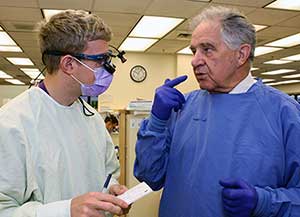
Publication date: Available online 6 March 2018
Source:Auris Nasus Larynx
Author(s): Nao Takahashi, Kaori Mori, Hironori Baba, Takanobu Sasaki, Masaaki Ohno, Fumio Ikarashi, Naotaka Aizawa, Kunihiro Sato, Akio Tsuchiya, Hideyuki Hanazawa, Masahiko Tomita, Yamato Kubota, Yuka Morita, Kuniyuki Takahashi, Arata Horii
ObjectiveGlobus sensation, a feeling of lump or something stuck in the throat, could be caused by structural, functional, and psychogenic diseases. Due to a possible multifactorial nature of the disease, neither diagnosing test battery nor standard treatment for globus sensation has been established. Therefore, a questionnaire to accurately identify globus patients and evaluate the severity of the disease is desired. Glasgow Edinburgh Throat Scale (GETS) is a 10-item questionnaire about the throat symptoms consisting of three subscales relating to dysphagia, globus sensation, and pain/swelling in the throat. It was reported that globus patients marked high scores specifically for the globus scale among three scales, indicating that GETS can be used as a valid symptom scale for globus sensation. Aims of this study were to translate GETS into Japanese and to test its reliability and validity.MethodsFifty-five patients complaining of globus sensation without abnormal endoscopic and CT findings were enrolled into the study. They were asked to answer the questions of GETS translated into Japanese (GETS-J). Reliability (internal consistency) of the questionnaire was tested using Cronbach's coefficient alpha. To test the validity, principal components analysis was used to identify the factorial structure of the questionnaire and GETS-J data were compared with those reported in the original GETS. Contribution of psychiatric comorbidities to globus sensation was also investigated by examining the correlation between Hospital Anxiety and Depression Scale (HADS) and GETS-J.ResultsReliability of the questionnaire examined by the Cronbach's coefficient alpha was satisfactory and all higher than 0.75. Principal components analysis identified following three questions as the globus scale: Q1, Feeling something stuck in the throat; Q5, Throat closing off; Q9, Want to swallow all the time. Somatic distress, i.e., patients' reaction to throat symptoms, was significantly correlated with globus scale (r=0.680). Anxiety component of HADS was significantly correlated with somatic distress but not with globus scale. These results were consistent with those of the original GETS except for the replacement of Q3 (discomfort/irritation in the throat) to Q5 (throat closing off) for globus scale in GETS-J.ConclusionTranslation of GETS into Japanese showed high reliability and validity, suggesting that translation and cross-cultural adaptation were not problematic. High correlation of globus scale of GETS-J with somatic distress indicated that GETS-J could be a useful questionnaire to identify the globus patients and evaluate the severity of the disease. Anxiety may complicate the somatic distress in patients with globus sensation.
from #ORL-AlexandrosSfakianakis via ola Kala on Inoreader http://ift.tt/2oOd4f1






















